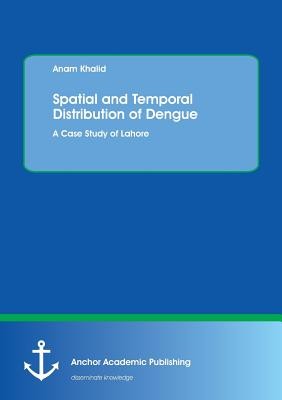
- We will send in 10–14 business days.
- Author: Anam Khalid
- Publisher: Anchor Academic Publishing
- Year: 2016
- ISBN-10: 3960670532
- ISBN-13: 9783960670537
- Format: 14.8 x 21 x 0.3 cm, softcover
- Language: English
- SAVE -10% with code: EXTRA
Spatial and Temporal Distribution of Dengue. A Case Study of Lahore (e-book) (used book) | bookbook.eu
Reviews
Description
This study was conducted to evaluate the dengue outbreaks pattern in spatial and temporal contexts and to identify the meteorological constraints behind the spread. The aim was to gain a complete picture of the scenario. The Lahore District was selected as the study area which was affected by mosquitoes to a great extent. Lahore is the second largest city of Pakistan with respect to its population due to its rapidly growing urbanization. The environmental factors affecting the spread of the disease have been identified and then mapped in a GIS based environment by using all the spatial and tabular data obtained from different sources. The factors affecting dengue spread were found to be Land Surface Temperature (LST), Land cover/Land use, Normalized Difference Vegetation Index (NDVI), Temperature, Rainfall, and Population Density.
EXTRA 10 % discount with code: EXTRA
The promotion ends in 20d.21:46:27
The discount code is valid when purchasing from 10 €. Discounts do not stack.
- Author: Anam Khalid
- Publisher: Anchor Academic Publishing
- Year: 2016
- ISBN-10: 3960670532
- ISBN-13: 9783960670537
- Format: 14.8 x 21 x 0.3 cm, softcover
- Language: English English
This study was conducted to evaluate the dengue outbreaks pattern in spatial and temporal contexts and to identify the meteorological constraints behind the spread. The aim was to gain a complete picture of the scenario. The Lahore District was selected as the study area which was affected by mosquitoes to a great extent. Lahore is the second largest city of Pakistan with respect to its population due to its rapidly growing urbanization. The environmental factors affecting the spread of the disease have been identified and then mapped in a GIS based environment by using all the spatial and tabular data obtained from different sources. The factors affecting dengue spread were found to be Land Surface Temperature (LST), Land cover/Land use, Normalized Difference Vegetation Index (NDVI), Temperature, Rainfall, and Population Density.


Reviews